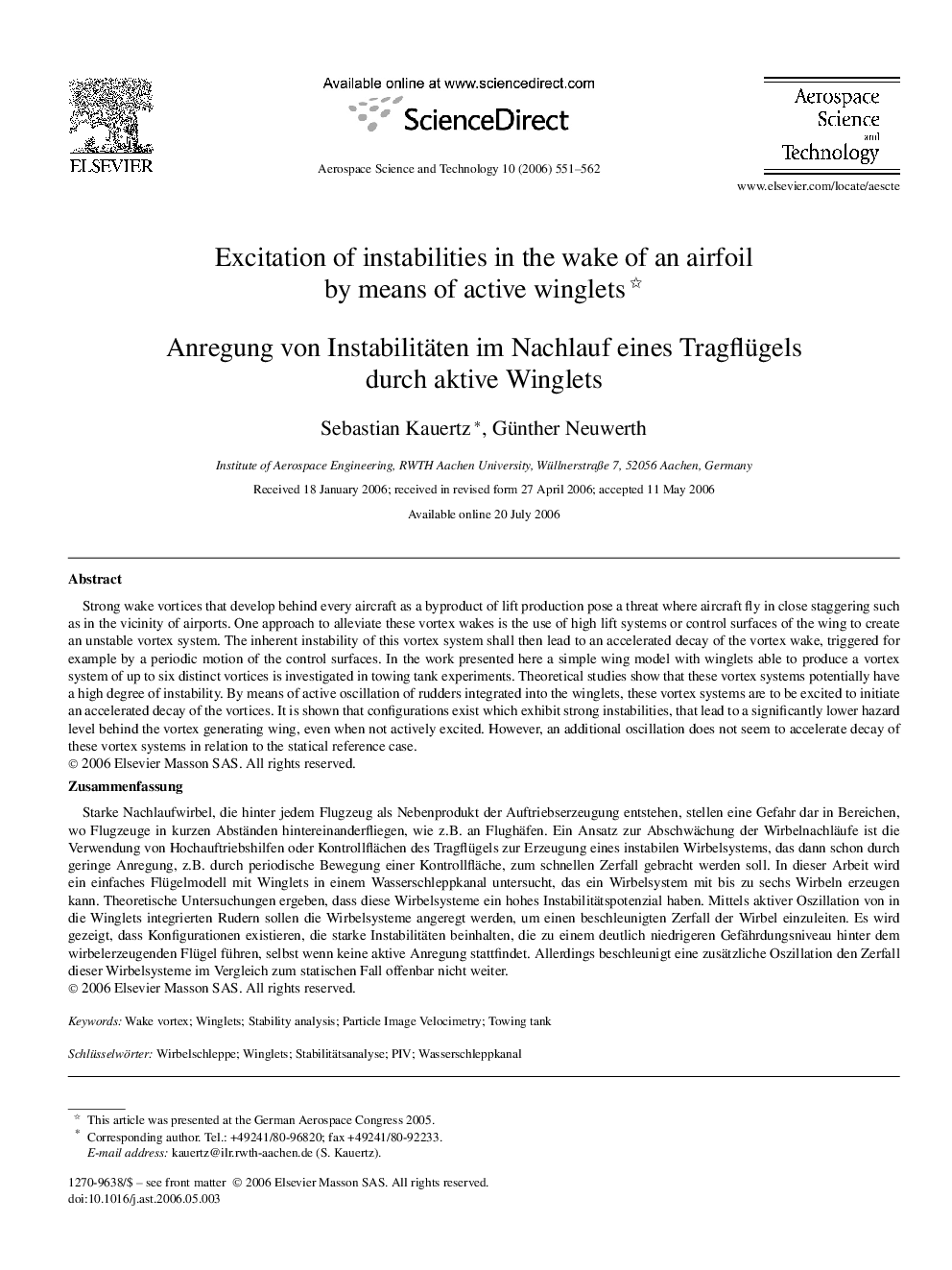| Article ID | Journal | Published Year | Pages | File Type |
|---|---|---|---|---|
| 1718983 | Aerospace Science and Technology | 2006 | 12 Pages |
Strong wake vortices that develop behind every aircraft as a byproduct of lift production pose a threat where aircraft fly in close staggering such as in the vicinity of airports. One approach to alleviate these vortex wakes is the use of high lift systems or control surfaces of the wing to create an unstable vortex system. The inherent instability of this vortex system shall then lead to an accelerated decay of the vortex wake, triggered for example by a periodic motion of the control surfaces. In the work presented here a simple wing model with winglets able to produce a vortex system of up to six distinct vortices is investigated in towing tank experiments. Theoretical studies show that these vortex systems potentially have a high degree of instability. By means of active oscillation of rudders integrated into the winglets, these vortex systems are to be excited to initiate an accelerated decay of the vortices. It is shown that configurations exist which exhibit strong instabilities, that lead to a significantly lower hazard level behind the vortex generating wing, even when not actively excited. However, an additional oscillation does not seem to accelerate decay of these vortex systems in relation to the statical reference case.
ZusammenfassungStarke Nachlaufwirbel, die hinter jedem Flugzeug als Nebenprodukt der Auftriebserzeugung entstehen, stellen eine Gefahr dar in Bereichen, wo Flugzeuge in kurzen Abständen hintereinanderfliegen, wie z.B. an Flughäfen. Ein Ansatz zur Abschwächung der Wirbelnachläufe ist die Verwendung von Hochauftriebshilfen oder Kontrollflächen des Tragflügels zur Erzeugung eines instabilen Wirbelsystems, das dann schon durch geringe Anregung, z.B. durch periodische Bewegung einer Kontrollfläche, zum schnellen Zerfall gebracht werden soll. In dieser Arbeit wird ein einfaches Flügelmodell mit Winglets in einem Wasserschleppkanal untersucht, das ein Wirbelsystem mit bis zu sechs Wirbeln erzeugen kann. Theoretische Untersuchungen ergeben, dass diese Wirbelsysteme ein hohes Instabilitätspotenzial haben. Mittels aktiver Oszillation von in die Winglets integrierten Rudern sollen die Wirbelsysteme angeregt werden, um einen beschleunigten Zerfall der Wirbel einzuleiten. Es wird gezeigt, dass Konfigurationen existieren, die starke Instabilitäten beinhalten, die zu einem deutlich niedrigeren Gefährdungsniveau hinter dem wirbelerzeugenden Flügel führen, selbst wenn keine aktive Anregung stattfindet. Allerdings beschleunigt eine zusätzliche Oszillation den Zerfall dieser Wirbelsysteme im Vergleich zum statischen Fall offenbar nicht weiter.
